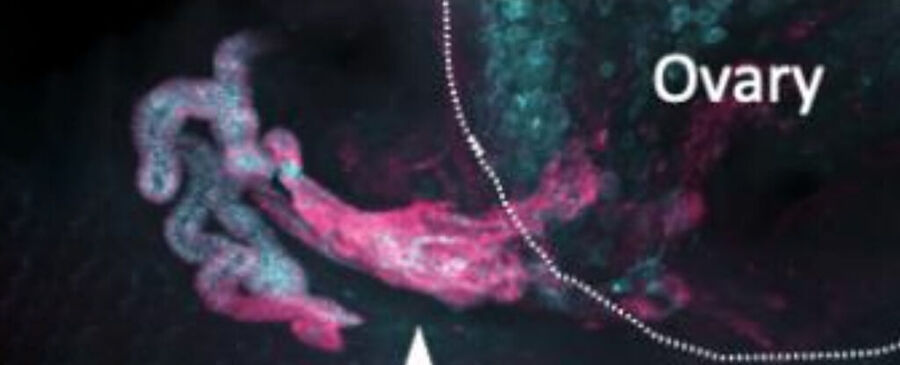OF THE
TIMES
In a group of Norwegian participants assessed between March 2020 and April 2023, participant-reported memory function, as scored on the EMQ [Everyday Memory Questionnaire], was numerically worse at several time points up to 36 months after a positive SARS-CoV-2 test than after a negative test.2) Other interesting studies:
The degree of subjects' psychopathy was studied using the Psychopathy Checklist - Revised (PCL-R) and an inverse correlation was found - the smaller the hippocampi, the more severe the degree of psychopathy. The strongest correlations were found in the posterior hippocampus. The posterior hippocampus is know to participate in processes, such as conditioning and forming associations. This is the first study to date to find structure-function (or structure-malfunction) correlation in terms of degree of psychopathy.Birds in Captivity Lose Hippocampal Mass (Does this also happens for humans?)
Caged birds may still sing, but being in captivity for just a few weeks can reduce the volume of the hippocampus by as much as 23 percent, according to a new Cornell study. The hippocampus is the part of the brain involved in spatial learning and memory tasks.Study shows recurrent depression shrinks area of brain responsible for forming new memories
A study published in Molecular Psychiatry today has proved once and for all that recurrent depression shrinks the hippocampus - an area of the brain responsible for forming new memories - leading to a loss of emotional and behavioural function.Hormones, Hysterectomy and the Hippocampus (Why is that no being highlighted when they advertise for gender surgery?)
In the current study, removal of the ovaries and the associated long-term estradiol deprivation made the hippocampus hypersensitive to ischemic stressors and induced a myriad of events leading to significant hippocampal CA3 cell damage and cell death. The long term estradiol deprivation also led to increased amyloid production and associated neurodegeneration. As one might expect, damage and disruption to the hippocampus, the brain's memory center, was associated with the animal's ability to learn, remember and function.How a Mother's Love Changes a Child's Brain (The attack on the traditional family is hardly a plus?)
Previous animal research showed that early maternal support has a positive effect on a young rat's hippocampal growth, production of brain cells and ability to deal with stress. Studies in human children, on the other hand, found a connection between early social experiences and the volume of the amygdala, which helps regulate the processing and memory of emotional reactions. Numerous studies also have found that children raised in a nurturing environment typically do better in school and are more emotionally developed than their non-nurtured peers.More than 150 comparative studies and articles on mask ineffectiveness and harms
Brain images have now revealed that a mother's love physically affects the volume of her child's hippocampus. In the study, children of nurturing mothers had hippocampal volumes 10 percent larger than children whose mothers were not as nurturing. Research has suggested a link between a larger hippocampus and better memory.
"The rebreathing of our exhaled air will without a doubt create oxygen deficiency and a flooding of carbon dioxide. We know that the human brain is very sensitive to oxygen depravation. There are nerve cells for example in the hippocampus, that can't be longer than 3 minutes without oxygen - they cannot survive. The acute warning symptoms are headaches, drowsiness, dizziness, issues in concentration, slowing down of the reaction time - reactions of the cognitive system. However, when you have chronic oxygen depravation, all of those symptoms disappear, because you get used to it. But your efficiency will remain impaired and the undersupply of oxygen in your brain continues to progress. We know that neurodegenerative diseases take years to decades to develop. If today you forget your phone number, the breakdown in your brain would have already started 20 or 30 years ago...The child needs the brain to learn, and the brain needs oxygen to function. We don't need a clinical study for that. This is simple, indisputable physiology. Conscious and purposely induced oxygen deficiency is an absolutely deliberate health hazard, and an absolute medical contraindication."Scientific evidence suggests the vaccine-autism link can no longer be ignored (From 2013, so this is old, but has been ignored nevertheless.)
The studies also show that children from countries with the highest ASD appear to have a much higher exposure to Aluminum from vaccines. The study points out that several prominent milestones of brain development coincide with major vaccination periods for infants. These include the onset of synaptogenesis (birth), maximal growth velocity of the hippocampus and the onset of amygdala maturation.Did COVID-19 escape Fort Detrick vaccine trial? Evidence that virus originated in US bioweapons lab

On today's show, we'll dive into the ABC's of Alaskapox with Bradley Perkins, MD. Dr. Perkins is the Chief Medical Officer at Karius.
In addition, he is a former top CDC official who led the anthrax bioterrorism investigation. He was also a leading expert in the more recent monkeypox, or mpox outbreak.
A healthy 40-year-old Japanese man suddenly experienced tachycardia and lost consciousness two days after vaccination. Continued resuscitation recovered the spontaneous heartbeat; however, the patient did not regain consciousness and died nine days later.
Electrocardiography after resuscitation showed marked ST-segment depression and incomplete right bundle branch block.
Influenza antigen and polymerase chain reaction tests for SARS-CoV-2 were negative.
The increase from one serious case every three to four years to the 28 hospital admissions Dr. Patterson reports for 2021 and 2022 represents a 47-fold increase in incidence.That is similar to:
For most of this time, the main focus of Twitter censorship has, of course, been supposed "Covid-19 disinformation." By now, almost all the most influential advocates of early treatment or critics of Covid-19 vaccines on Twitter have had their accounts suspended, and most have not made it back.For more on how that came about:
The list of the permanently suspended includes such prominent voices as Robert Malone, Steve Kirsch, Daniel Horowitz, Nick Hudson, Anthony Hinton, Jessica Rose, Naomi Wolf, and, most recently, Peter McCullough.
And myriad smaller accounts have met the same fate for committing such thought crimes as suggesting that the myocarditis risk of both mRNA vaccines (Moderna and BioNTech/Pfizer) outstrips any benefit or pointing to mRNA instability and its unknown consequences for safety and efficacy.
[...]
Unbeknownst to most Americans, this has in fact occurred and their 1st Amendment rights are being vitiated, namely, by the European Union. There is a financial gun pointed at Twitter. But it is not the Biden administration, but rather the European Commission, under the leadership of Commission president Ursula von der Leyen, that has its finger on the trigger.
The law in question is the EU's Digital Services Act (DSA), which was passed by the European Parliament last July 5 amidst almost total indifference - in Europe as much as in the United States - despite its momentous and disastrous implications for freedom of speech worldwide.
The DSA gives the European Commission the power to impose fines of up to 6% of global turnover on "very large online platforms or very large online search engines" that it finds to be non-compliant with its censorship requirements. "Very large" is defined as any platform or search engine that has over 45 million users in the EU. Note that while the size criterion is limited to users in the EU, the sanction is based precisely on the company's global turnover.
The DSA has been designed to function in combination with the EU's so-called Code of Practice on Disinformation: an ostensibly voluntary code for "combatting disinformation" - aka censoring - that was originally launched in 2018 and of which Twitter, Facebook/Meta and Google/YouTube are all signatories.
But with the passage of the DSA, the Code of Practice is evidently not so "voluntary" anymore. There is no need for complex legal analyses to show that the sanction provisions in the DSA are intended as the enforcement mechanism for the Code of Practice. The European Commission has said so itself - and in a tweet no less!
In fact, the Code has never really been all that voluntary. The Commission had already made its desire to "tame" the US tech giants known previously, and it had already flexed its muscles, imposing massive fines on Google and Facebook for other alleged offenses.

- deaths due to alcohol poisoning been falling for the past two decades in Russia and rising in the US
- birth defects falling faster in Russia than the US and is now even lower than ours?
- we literally dying faster and faster and the Russians slower and slower for twenty years now'
Comment: Trying to tease out what's going on with Long Covid is a puzzle, but one thing that consistently shown is that it seems to be more correlated with those who got the vaccine rather than those who didn't. If the syndrome is in fact caused by the spike protein, it's easy to see why.
See also: